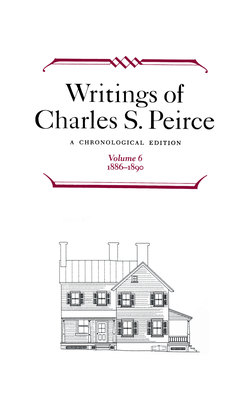Читать книгу Writings of Charles S. Peirce: A Chronological Edition, Volume 6 - Charles S. Peirce - Страница 25
Оглавление11
[Two Letters from J. B. Loring on Algebra Lessons]
| 22 and 27 December 1887 | Houghton Library |
New York Dec 22/87
Mr C. S. Peirce
Dear Sir:
I enclose my solutions of the questions relating to 1st lesson. Please excuse pencil. I am a poor penman and can write plainer and more quickly with pencil than with pen.
Am somewhat doubtful as to the last solution but it is the best I can do with it. I do not see how there can be any other. It is required to demonstrate that
(x + y)(y + z)(z + x) = xy + yz + zx.
The statement at the left of the sign of equality relates to multiplication and its truth depends upon the truth of each of the 3 statements in parenthesis. Each of these 3 statements is a plus statement whose truth depends upon the truth of either one of its members. In the 1st statement is x, in the 2nd z and in the 3d are both z and x. Hence it seems to me that if both z and x are true then each of the 3 statements in parenthesis is true, and if each of the 3 statements in parenthesis is true then the whole statement at the left of the sign of equality is true. The statement at the right of the sign of equality is a plus statement whose truth depends upon the truth of either one of its 3 members. As each of these 3 members relates to multiplication, the truth of each depends upon the truth of both of its parts. One of these members is zx. Hence if both z and x are true then this one member is true, and if this one member is true, the whole statement at the right of the sign of equality is true. And these conditions, the truth of both z and x, are the same as are those under which the statement at the left of the sign of equality is true.
The last two lines of page 2 of the sheet that you sent me are somewhat blurred. May I trouble you to send me a copy of these two lines and oblige
Yours Truly
J. B. Loring
Box 555
New York
Dec 27 1887
Mr C. S. Peirce
Dear Sir:
In demonstrating that
(a + b)(c + d) = ac + ad + bc + bd
you begin by saying “by the distributive principle
(a + b)(c + d) = (a + b)c + (a + b)d.”
May I trouble you to explain to me how by the distributive principle you arrive at this result.
And in connection with this demonstration you also say “the associative principle is assumed in leaving off the parentheses.” I do not understand that.
In your first lesson you say “the expression x + y is that statement which is true if either of the statements x and y is true and is false if both are false”. Then am I to understand that the above expression in the 3d line from top of this page—(a + b)c + (a + b)d—is true if either of the statements, (a + b)c and (a + b)d, is true and is false if both are false
Yours Truly
J. B. Loring
Box 555 New York
